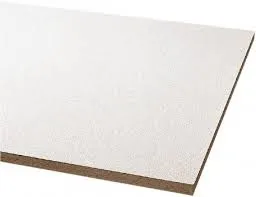Dec . 13, 2024 02:38 Back to list
ceiling access cover
The Importance of Ceiling Access Covers Enhancing Safety and Maintenance
In contemporary architecture and construction, the ceiling access cover acts as a small yet significant component that facilitates maintenance, safety, and functionality in both residential and commercial buildings. These access points are essential for allowing technicians to reach vital systems hidden above the ceiling, including electrical wiring, plumbing, and HVAC components. This article explores the various aspects and benefits of ceiling access covers, highlighting their importance in modern infrastructure.
What are Ceiling Access Covers?
Ceiling access covers are removable panels or doors installed within ceilings. They provide access to the areas above the ceiling, enabling maintenance personnel or contractors to conduct repairs or inspections without the need for extensive disassembly of the ceiling structure. These covers come in various sizes, materials, and designs to suit different ceiling types and aesthetic preferences.
Benefits of Ceiling Access Covers
1. Ease of Maintenance One of the primary benefits of ceiling access covers is the convenience they offer for maintenance work. As buildings age, systems may need repairs or updates. Access covers make it easy for technicians to reach these systems efficiently, thus reducing downtime and minimizing disruptions to occupants.
2. Improved Safety Safety is a critical concern in building maintenance. Access covers reduce the need for riskier methods of reaching areas above ceilings, such as cutting through drywall or climbing ladders in awkward spaces. By providing a secure and designated access point, different contractors can perform their work with reduced risk of injury or accidents.
ceiling access cover

3. Aesthetic Integration Ceiling access covers are often designed to blend seamlessly with the surrounding ceiling structure. This means they can be made to match the ceiling's texture and color, rendering them nearly invisible. This aesthetic consideration is paramount in environments where appearance plays a significant role, such as in corporate offices, hotels, and high-end residential buildings.
4. Versatility and Customization There are various designs and materials available for ceiling access covers—ranging from plastic and metal to fire-rated options. This versatility allows architects and builders to select appropriate access covers based on the specific requirements of each project. Customization is also available, enabling the design of access points tailored to the unique needs of the building.
5. Compliance With Building Codes Having access points, such as ceiling access covers, can help ensure compliance with local building codes and regulations. Many codes require that certain systems remain accessible for inspections and maintenance, and ceiling access covers provide a practical way to meet these requirements.
6. Cost-Effectiveness Although the initial installation of ceiling access covers may involve additional costs, they ultimately prove to be cost-effective. Regular access to systems for maintenance can prevent costly repairs later on by identifying issues before they escalate. Additionally, prompt maintenance can extend the lifespan of systems, saving money in the long run.
Conclusion
In summary, ceiling access covers serve as a fundamental element in the maintenance and safety of building management. They provide an efficient solution for accessing critical systems while enhancing safety and aesthetic appeal. With numerous designs and materials available, these covers can be effectively integrated into any architectural style. As buildings continue to evolve and technology advances, the importance of ceiling access covers will undoubtedly increase, contributing to our ability to maintain and manage both residential and commercial spaces with ease and efficiency. Implementing high-quality access covers is not just a practical decision; it's a vital investment in the longevity and functionality of any building.
-
Quality Ceiling Trap Doors & Access Panels | Easy & Secure AccessNewsAug.30,2025
-
Durable Ceiling T Grid Systems | Easy InstallationNewsAug.29,2025
-
PVC Gypsum Ceiling: Durable, Laminated Tiles for Modern SpacesNewsAug.28,2025
-
Pvc Gypsum Ceiling Is DurableNewsAug.21,2025
-
Mineral Fiber Board Is DurableNewsAug.21,2025
-
Ceiling Tile Clip Reusable DesignNewsAug.21,2025







